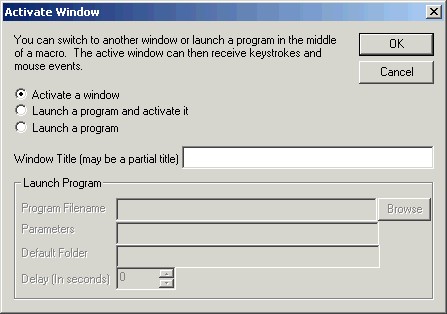

I have my "hyper" key bound to caps lock using Karabiner Elements (but it still works as a normal caps lock if you hold it for half a second). a replacement for Caffeine (menubar icon to keep computer from going to sleep) fuzzy-find popups (like Alfred/fzf) are built-in. hyper+L arranges my browser+editor+terminal in a standard layout, and I have other shortcuts to set apps to halves or thirds of the screen, or to another monitor. because it's easy to position apps wherever you want.
#Hammerspoon monitor window title change code
if you can code a tiny bit of Lua there's no need for apps like Spectacle, Rectangle, Moom, etc. hyper+T for text editor, hyper+B for browser, hyper+S for shell) keyboard shortcuts for common apps (eg. It would make sense to look into using Spacehammer and more VIM bindings sometime soon.It shows off a tiny bit of what you can do with Hammerspoon: However, Hammerspoon is one of the more promising configuration systems especially considering the more complete VIM bindings which exist in the community and would bear a second look. For my purposes right now, this monolithic a is enough, and the entire configuration corresponds to this commit in my Dotfiles. On the other hand, it is baffling to see the lack of good FOSS tools on this ecosystem 9, but that is to be expected perhaps. In that regard, this post is a success story, even with the awkwardness of the implementation. It has been very restrictive to not be able to use the keyboard layout I spent years crafting. 2) don’t really allow for more than downloading rules off of the internet 5, like the one below.ġ 3 Conclusions This is setup through a karabiner.json file, since it appears that the “Complex modifications” referred to in the GUI (Fig. I have been using the basic Colemak layout with a simplistic Karabiner caps to delete for a while now, which allows for a standards compliant Colemak experience, but extending this like I needed was a little bit of a struggle.Īpparently it is possible to overload the keyboard system with a “Hyper” key 4, which is the closest to Extend.

Of Ukelele and manually writing things then, nothing more need be said.

Also, rapid prototyping was out of the question, since Ukelele requires a log-out log-in cycle to set things up. The closest possible solution would be to do a very awkward Esc based layout. It can either be remapped using system settings 3 to one of the other modifier keys, but not to Extend. However, evidently, there is no real way to remove the stickiness from the Caps Lock key. Now of the four, I had a predilection to move towards manually writing, with the help of Ukelele. keylayout files Use Karabiner Elements This seems to be closer to AutoHotKey and the like, runs in the background and actively intercepts keys based on json configurations though there seems to be a more rational method (a hidutil remapping file generator) for newer kernels 2 Script things with Hammerspoon Uses a lua engine to interact with the system, can be configured for the most part with Fennel using Spacehammer keylayout These then go in $HOME/Library/Keyboard\ Layouts Use Ukelele The incredibly poorly named (for search purposes) versatile tool is able to ease the pain slightly for writing. There are essentially a few options: Manually write. Just as a reminder, my setup (or hzColemak) consists of an augmented VIM workflow, as shown below, and described in my previous post.
#Hammerspoon monitor window title change series
This post is part of a series on Colemak and keyboard management in general.


 0 kommentar(er)
0 kommentar(er)
